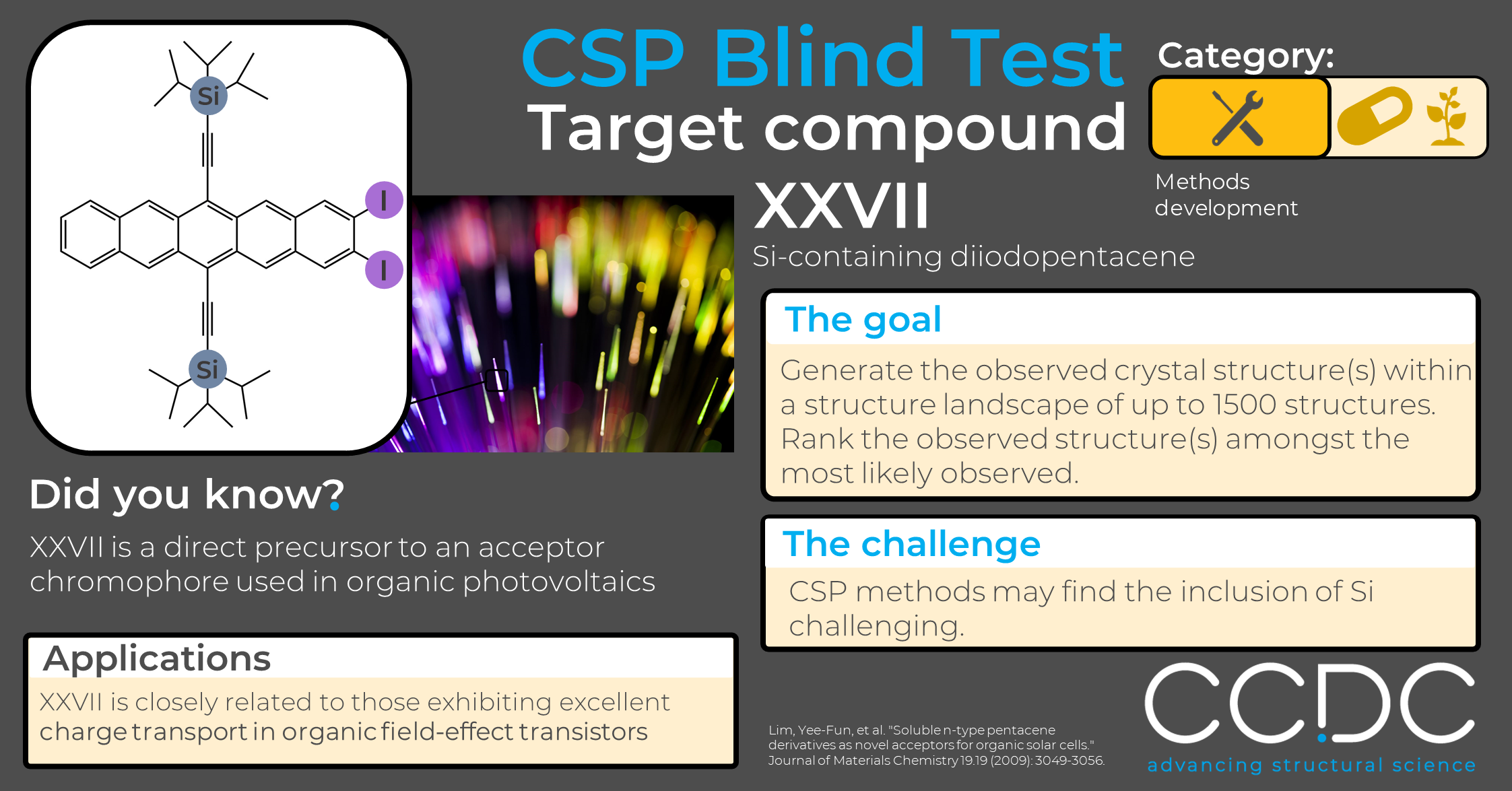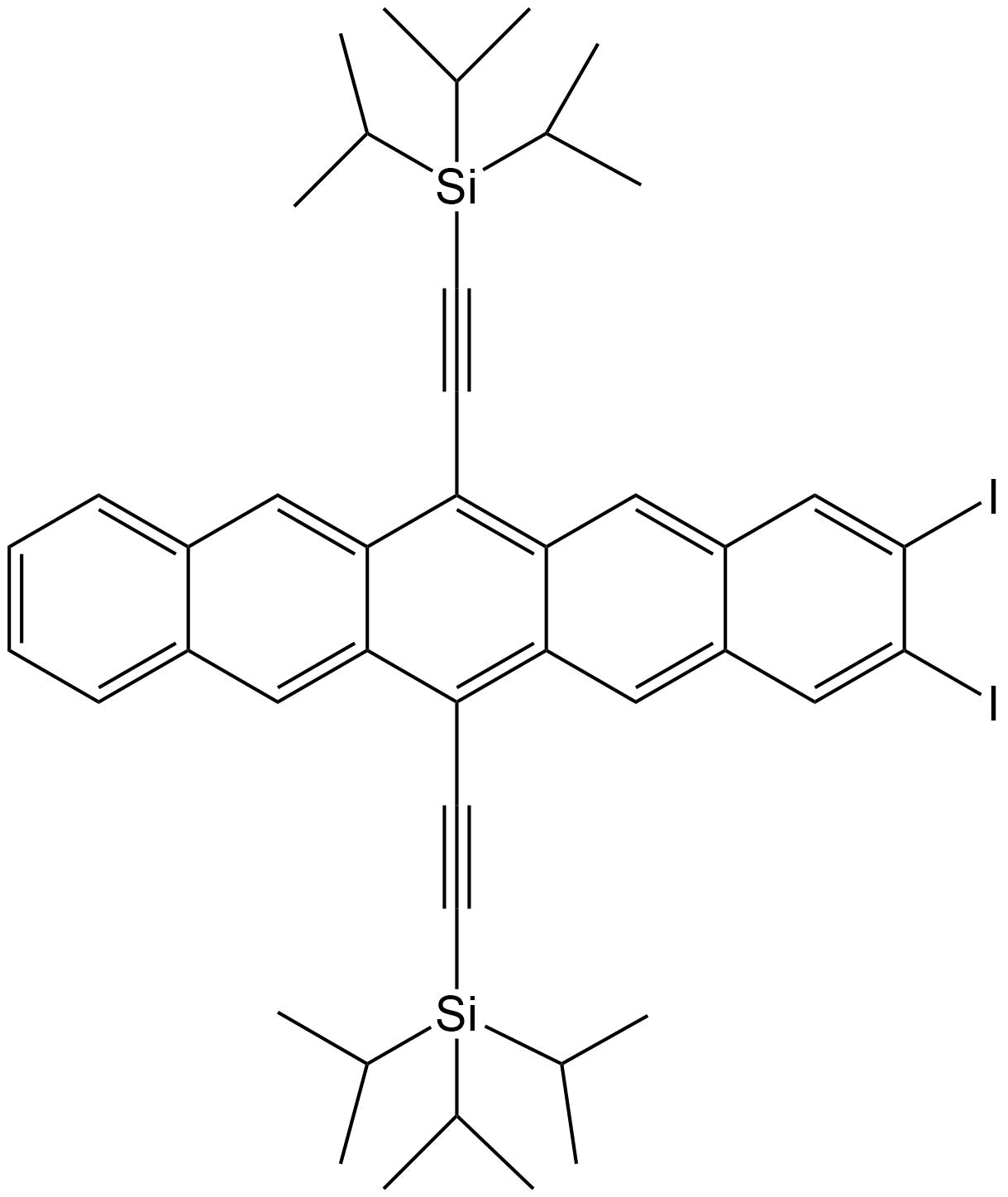CSP Blind Test Structure Reveal Target XXVII: optoelectronic system
It’s time to reveal the 2D chemical structure of another one of the systems featured in our 7th Crystal Structure Prediction (CSP) Blind Test. This one sees the blind test range into a new area of chemistry! Read on to see the structure and find out about the properties and applications of the system.

Revealing the target compound structures
For the first time since the initial CSP Blind Test in 1999, we are releasing the 2D chemical structures of the target compounds to the public through our website and social media platforms. We hope that this will showcase to the wider community the types of systems that CSP methods are applicable to, but more importantly, expose the challenges that CSP currently faces in terms of both computational hardware limitations (due to molecular size) and chemical complexity, and encourage wider participation for finding suitable solutions.

Target XXVII has a silicon-containing diiodopentacene structure
Properties and applications
Target XXVII is strongly representative of the kinds of materials used in electronic and photonic applications and is closely related to those exhibiting excellent charge transport in organic field-effect transistors. More specifically, this particular structure is a direct precursor to an acceptor chromophore used in organic photovoltaics.[1]
The crystal structure prediction challenge
This target features in both stages of the 7th CSP Blind Test—meaning that first (starting in October 2020), participants were asked to generate and submit a landscape (a list of putative structures) of up to 1500 structures. This will test how well their CSP methods do at generating crystal structures from a 2D chemical diagram. In the second stage (starting in November 2021), participants will be provided with a CCDC-prepared landscape of 100 structures (this will contain all experimentally observed and solved structures up until that point in time) and are asked to rank them in order of likelihood of observation. This will test how well each method ranks the experimental structures amongst others.
This is the first time a Si-containing system has been featured in the CSP Blind Test since the series started in 1999. So it will be interesting to see how computational methods handle the new chemistry. Excitingly, it is also the first time a system with optoelectronic applications has been included – will this pave the way for CSP methods for the rational design of new functional materials? Who knows!
Results
Unfortunately, results from the blind test will not be publicized until after the final deadline (May 2022), but until then, look out for the final few blogs revealing the remaining structures in the 7th CSP Blind Test featuring even more new chemistry, exciting applications, and new challenges for CSP methods.
Register for our newsletter here to receive updates from the CCDC on the CSP Blind Test and our other research, updates and more.
Learn more about the CSP Blind Test here.
References
[1] Lim, Yee-Fun, et al. “Soluble n-type pentacene derivatives as novel acceptors for organic solar cells.” Journal of Materials Chemistry 19.19 (2009): 3049-3056.